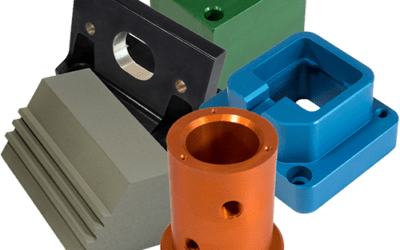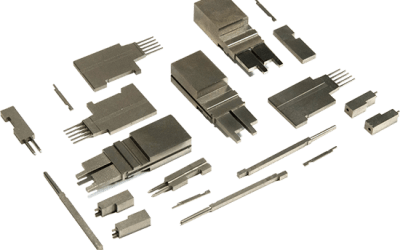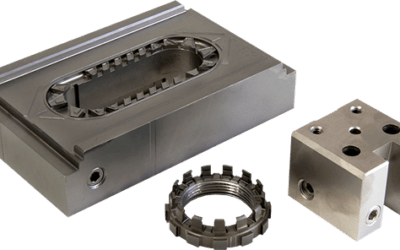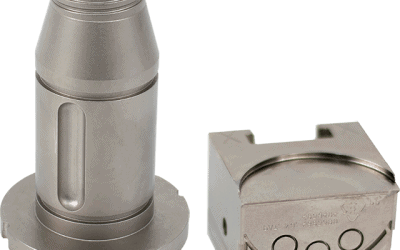How Hardcoat Type III Anodizing Services Compare to Type II & Stainless Steel
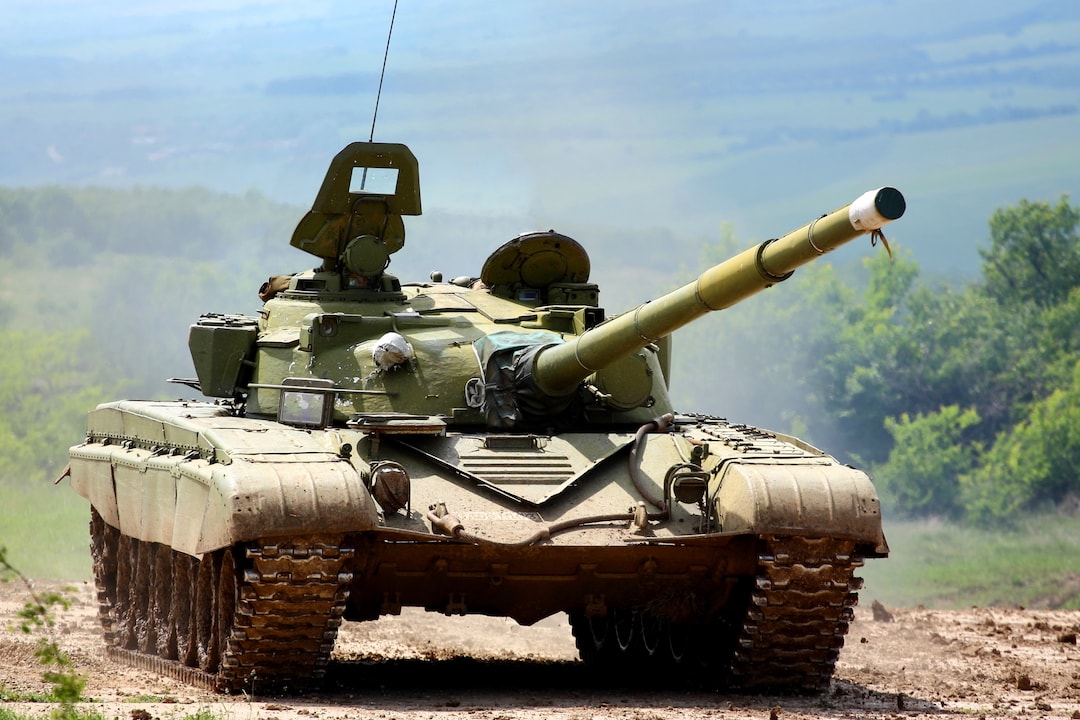
Aluminum anodizing is categorized into three primary types under the MIL-A-8625 specification: Type I, Type II, and Type III. Type I, which is a chromic acid anodize, produces a thin, protective layer best suited for corrosion resistance with minimal dimensional change. Type II, a sulfuric acid anodize, is the conventional process, widely used for both functional protection and decorative finishes, and it can be dyed in nearly any color.
Type III, also known as hardcoat anodizing, is performed under more rigorous process controls with lower bath temperatures and higher current densities that produce a denser, harder, and significantly thicker oxide layer for more demanding applications. Hardcoat thickness typically ranges from 0.0005” to 0.0030”, depending on the aluminum alloy being anodized, with hardness levels reaching up to 65–70 Rockwell C.
Continue reading to learn more about how type III hardcoat anodizing compares to type II and stainless steel, or reach out to PFI for more information and to receive a quote for anodizing services.
Type III Hardcoat Anodizing vs. Type II Anodizing
While both Type II and Type III fall under the same MIL-A-8625 specification, the differences in coating properties are substantial. Type II anodizing creates a thinner, porous oxide layer (0.0001”–0.001”) suitable for corrosion protection, decorative coloring, and light wear resistance. By contrast, Type III hardcoat anodizing produces a much thicker, non-conductive coating with superior wear resistance, low porosity, and exceptional hardness. This makes Type III the preferred choice for aerospace, defense, and industrial applications where parts must withstand extreme abrasion, heavy loads, or corrosive environments.
Another key distinction lies in the processing environment: Type II anodizing uses a sulfuric acid bath at about 68–70°F, whereas Type III is performed at much lower bath temperatures (34–36°F) with higher current densities, yielding denser oxide growth that penetrates and builds on the aluminum surface simultaneously.
Comparing Hardcoat Type III Anodizing
|
Property |
Type II Anodizing | Type III Hardcoat |
Stainless Steel |
|
Typical Thickness |
0.0001” – 0.001” | 0.0005” – 0.003” |
Solid material, no coating |
|
Hardness |
~40–50 Rockwell C (moderate wear resistance) | Up to 65–70 Rockwell C (high wear resistance) |
~50–55 Rockwell C (varies by alloy) |
|
Corrosion Resistance |
Good for indoor/light outdoor use | Excellent, including marine and harsh environments |
Excellent, inherently corrosion-resistant |
|
Color Options |
Clear or dyed in many decorative colors | Typically darker (gray, bronze, black), limited dye range |
Limited to natural metallic finishes |
|
Dielectric Properties |
Electrical insulator, withstands ~800 volts per 0.001” | Superior insulator, withstands 800–2000 volts per 0.001” |
Conductive (unless coated) |
|
Weight |
Very lightweight | Very lightweight |
Heavy, ~3x weight of aluminum |
|
Machinability |
Easy, fast machining | Easy, fast machining (coating added after machining) |
Difficult, machining is slower and more costly |
|
Abrasion Resistance |
Moderate, suitable for general use | Excellent, ideal for high-friction/wear applications |
Good, but less wear-resistant than Type III coatings in many cases |
|
Cost |
Low to moderate | Moderate (higher process cost than Type II, but lower than stainless) |
High (material, machining, and handling costs) |
|
Best Applications |
Decorative finishes, light wear parts, consumer goods | Aerospace, defense, firearms, machinery, molds, high-wear components |
Food processing, marine hardware, medical, and other areas where inherent strength is critical |
Type III Hardcoat Anodizing vs. Stainless Steel
In many cases, hardcoat anodized aluminum can replace stainless steel, offering significant advantages in cost, weight, and performance:
- Lightweight design – anodized aluminum is far lighter than stainless steel, reducing handling, shipping, and assembly costs.
- Lower machining costs – machining aluminum is up to twice as fast as stainless, cutting production time and expense.
- Comparable corrosion resistance – Type III anodized aluminum provides durable resistance in many of the same environments where stainless would be specified.
- Tight tolerances – coatings build both inward and outward, maintaining dimensional accuracy for precision parts.
- Energy efficiency – anodized aluminum molds retain heat more effectively than hardened steel, reducing energy consumption in plastic injection molding and similar processes.
- Cost savings – both material cost and lifecycle costs (replacement, maintenance) are typically lower compared to stainless steel.
By substituting stainless steel with Type III anodized aluminum, manufacturers gain material efficiency and extend part life, while still meeting critical performance standards.
Common Applications for Type III Hardcoat Anodizing
There are many different types of applications for Type III hardcoat anodizing, including:
- Aerospace – structural components, housings, and fasteners requiring long service life
- Defense & Firearms – enhanced corrosion and wear resistance in extreme conditions
- Machinery – gears, rollers, and parts subject to repeated friction
- Electronics – dielectric coatings for housings and emissivity control
- Oil & Gas – downhole tools, valves, and equipment exposed to corrosive fluids
- Cookware – non-stick performance and corrosion protection
- Molds & Dies – improved release properties and reduced wear during production
- Sporting Goods – lightweight components with high durability and color flexibility
Type III Hardcoat Anodize | Military Specification MIL-A-8625
At Progress for Industry, Inc. (PFI), our Type III hardcoat anodizing services are certified to MIL-A-8625, ensuring full compliance with aerospace, defense, and industrial specifications. With over 30 years of experience serving OEMs, military suppliers, and manufacturers worldwide, PFI delivers anodizing solutions that combine technical precision with proven reliability.
In addition to hardcoat anodizing, we also provide Type II anodizing services, enabling customers to select the most cost-effective and application-appropriate finish. Our team of craftsmen and engineers understands the strict requirements of MIL-A-8625 and applies them to ensure every part meets the highest standards for corrosion resistance, wear protection, and performance.
Questions? Ready for a quote? Contact PFI today to learn how our Type III anodizing services can outperform stainless steel and extend the life of your aluminum components.

